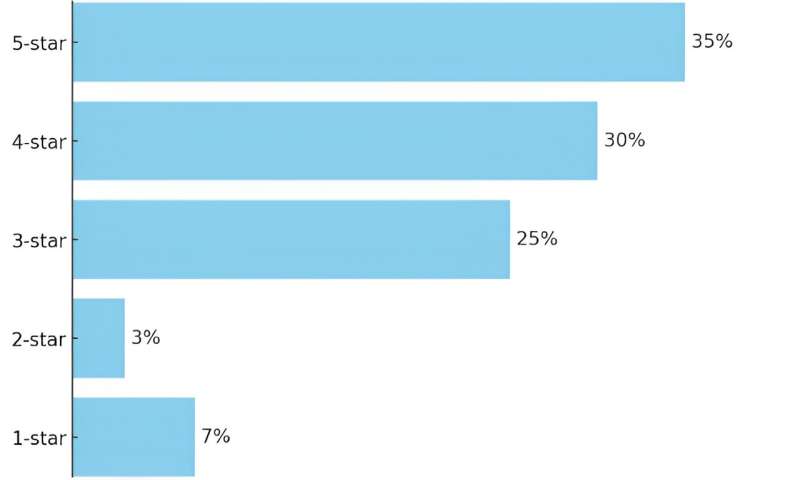This article has been reviewed according to Science X's editorial process and policies. Editors have highlighted the following attributes while ensuring the content's credibility:
fact-checked
trusted source
proofread
How reviews are displayed matters with online shopping

Online reviews significantly influence consumer decisions, marketing research shows. But when it comes to visual displays, not all online reviews are equal, and their differences might influence product sales.
Javad Mousavi, assistant professor of marketing in the Sam M. Walton College of Business of the U of A, studied two prominent visual formats of summary product information used by major online retailers and found that consumers respond more positively to information displayed in simple bar graphs rather than graphs appearing as proportions of a whole.
Mousavi's study, "Unveiling Stars: How Graphical Displays of Online Consumer Ratings Affect Consumer Perception and Judgment," has been published in the Journal of Marketing Research.
Though previous research has indicated that consumer decisions are significantly influenced by online reviews, most of this work has focused on attributes not fully controlled by retail firms. Limited research has examined how controllable attributes, such as review display formats, affect consumers.
"We address an important yet neglected aspect of online word-of-mouth," Mousavi said. "This study is a systematic examination of how displaying ratings in various bar graphs significantly affects consumers' evaluations of products, which may have consequent impacts on sales."
Drawing on visual perception research, Mousavi examined the effectiveness of two prominent graphical display formats used by major e-commerce platforms. One format displayed ratings in proportional format, that is, as a percentage of the whole, as can be seen on Amazon. The other format, used by Google, displayed ratings in a simple bar graph representing its peak share.

Mousavi focused on the role of the graphs' reference points presented in the x-axis, the horizontal line seen in graphical displays of consumer ratings. In proportional bar graphs, x-axes range from 0 to 100% of the ratings. In simple bar graphs, x-axes range from 0 to the share of the most common rating score, in this case 35%.
Across nine studies, Mousavi found compelling evidence that consumers prefer ratings displayed in a simple bar graph. As a consequence, consumers who consider purchasing a product might think twice when the same ratings are displayed in proportional bar graphs. For example, the figures below show the same ratings displayed in simple and proportional bar graphs, respectively.
More information: Javad Mousavi et al, Unveiling Stars: How Graphical Displays of Online Consumer Ratings Affect Consumer Perception and Judgment, Journal of Marketing Research (2023). DOI: 10.1177/00222437231179186
Provided by University of Arkansas





















